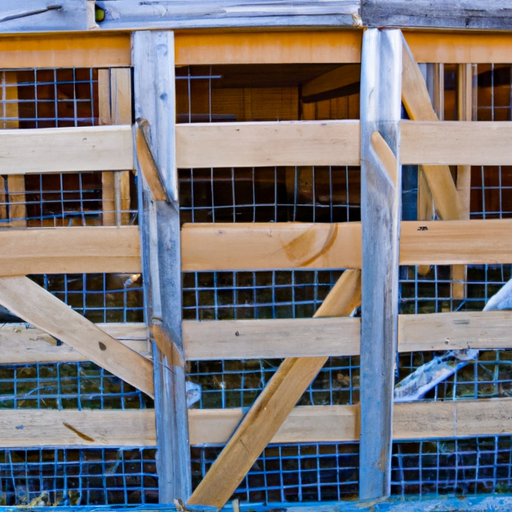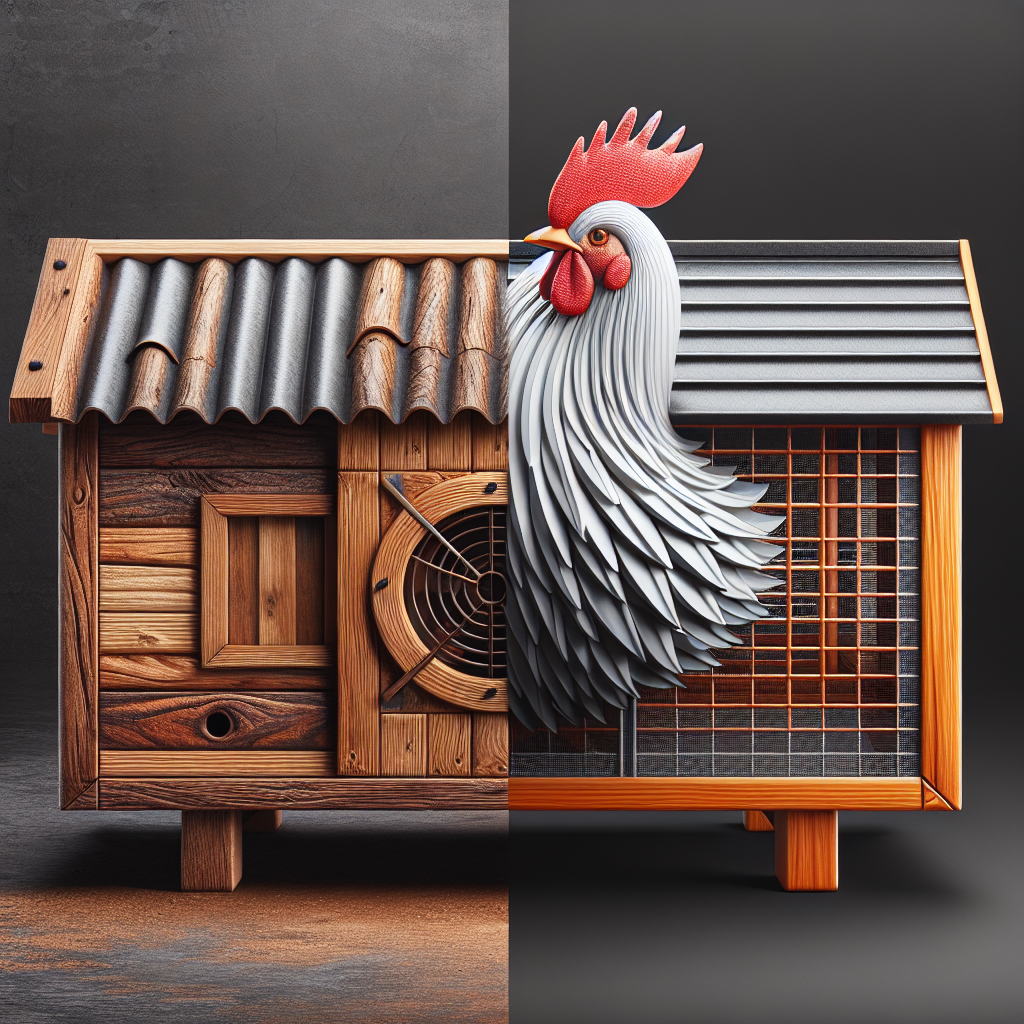Looking to build a chicken coop but unsure about the best material to use? Don’t worry, we’ve got you covered! In this article, we’ll guide you on how to choose the most durable material for your coop based on your specific location and climate. With the right material, you can ensure that your coop stands strong against all weather conditions and provides a safe and cozy home for your feathered friends. So let’s dive in and find out the key factors to consider when selecting the perfect material for your chicken coop!
Factors to Consider
When choosing the most durable material for your coop, there are several factors that you should consider. These include the location of your coop, the climate in your area, your budget, the maintenance requirements, and the level of predator protection needed. By keeping these factors in mind, you can select the best material to ensure the longevity and functionality of your coop.
Common Coop Materials
There are three main types of materials commonly used in building coops: wood, metal, and plastic. Each material has its own advantages and disadvantages, as well as specific types that offer different benefits. By understanding the characteristics of these materials, you can make an informed decision on which one is most suitable for your needs.
Wood
Wood is a popular choice for coop construction due to its natural look and ease of customization. It provides good insulation and is relatively affordable compared to other materials. Additionally, wood is capable of withstanding various weather conditions when properly treated. However, it does have a few downsides. Wood is susceptible to rot and decay if not maintained regularly, and it may require more frequent repairs and replacements compared to other materials. Some of the best types of wood for coop construction include cedar and redwood, as they are naturally resistant to insects and decay.
Metal
Metal coops offer excellent durability and strength. They are resistant to rot, decay, and damage from pests, making them a low-maintenance option. In areas with harsh weather conditions, such as high winds or heavy snow, metal coops provide added stability and protection. However, metal can become hot in direct sunlight, potentially causing discomfort for the chickens inside. It can also be more expensive than other materials and may require insulation for temperature control. The best types of metal for coop construction are galvanized steel and aluminum, which are both resistant to corrosion.
Plastic
Plastic coops are lightweight, easy to clean, and resistant to rot and decay. They are also affordable and require minimal maintenance. Plastic coops are ideal for areas with high humidity, as they do not absorb moisture like wood does. However, they may not offer the same level of durability and protection against predators compared to wood or metal. Additionally, plastic may become brittle over time, especially in extreme temperatures, leading to potential cracks or breakage. Look for plastic coops made from high-density polyethylene (HDPE), as it is known for its strength and durability.
Location
The location of your coop plays a crucial role in determining the most suitable material for construction. Different locations have varying environmental conditions and considerations that should be taken into account.
Urban Area
If you reside in an urban area, you might have limited space available for your coop. In this case, a lightweight and compact material such as plastic might be a suitable option. Plastic coops can be easily moved and do not take up much space. Additionally, noise reduction is essential in urban areas to minimize disturbance to neighbors, and a coop made from plastic or metal can provide better sound insulation compared to wood.
Rural Area
Rural areas often have more land available for larger coops. In such locations, wood or metal coops are commonly used due to their durability and ability to withstand various weather conditions. Consider using materials that blend well with the natural surroundings, such as wood, to maintain a cohesive appearance with the rural landscape.
Suburban Area
Suburban areas present a blend of urban and rural characteristics. The choice of material will primarily depend on personal preferences, restrictions set by homeowners’ associations, and climate considerations. However, as suburban areas tend to have more space available, wood or metal coops can be a suitable choice for their durability and aesthetic appeal.
Climate
The climate in your area is another crucial factor to consider when choosing the most durable material for your coop. Different materials have varying levels of tolerance to different climate conditions.
Hot and Dry
In hot and dry climates, materials such as metal are beneficial as they reflect heat and do not retain it. This helps to keep the interior of the coop cooler and more comfortable for the chickens. Alternatively, plastic coops can also be suitable as they do not absorb moisture and are not prone to rot or decay in dry conditions.
Hot and Humid
Hot and humid climates can pose challenges for coop materials due to the combination of heat and moisture. Wood and metal coops can both be suitable choices, but it is important to ensure proper ventilation and moisture control. Regular maintenance and treatment with weather-resistant coatings are crucial to prevent rot and decay in wooden coops.
Cold and Dry
In cold and dry climates, materials that provide insulation and retain heat, such as wood, are ideal. They help to keep the interior of the coop warm and comfortable for the chickens. Metal coops can also be a suitable option, as they are less prone to damage from extreme cold temperatures. Proper sealing and insulation are crucial in both cases to maintain a comfortable environment for the chickens.
Cold and Humid
Cold and humid climates require materials that can withstand both low temperatures and high moisture levels. Wood coops treated with weather-resistant coatings can be a good choice, as they offer insulation and are resistant to moisture. Metal coops can also be suitable, but insulation may be necessary to prevent the cold from seeping in. Plastic coops should be avoided in such climates, as they may become brittle and more prone to damage.
Budget
Your budget is an important consideration when selecting the most durable material for your coop. It is essential to find a balance between cost and quality to ensure that your coop remains sturdy and functional over time.
Cost of Materials
The cost of materials can vary depending on the type of material chosen. Wood is generally more affordable compared to metal and plastic. Metal coops tend to be the most expensive option, especially when using high-quality materials like galvanized steel. Plastic coops fall in the middle range in terms of cost. Consider your budget and the desired lifespan of your coop when making a decision.
Cost of Maintenance
In addition to the initial cost of materials, it is important to consider the ongoing cost of maintenance. Wood coops require regular maintenance such as sealing, staining, and potential repairs. Metal coops require less maintenance but may need occasional touch-ups to prevent rust. Plastic coops typically require minimal maintenance, but there is a possibility of cracks or breakage over time. Assess your willingness and ability to invest time and resources in maintenance when considering the long-term costs.
Maintenance
The level of maintenance required for your coop is an essential factor to consider when choosing a durable material.
Ease of Cleaning
Cleaning your coop is crucial for maintaining a healthy and safe environment for your chickens. Wood coops may be more challenging to clean due to their natural porosity, which can absorb dirt and moisture. Metal and plastic coops generally offer smoother and easier-to-clean surfaces.
Resistance to Rot and Decay
The resistance to rot and decay is an important consideration, especially in areas with high humidity or regular rainfall. Wood requires regular maintenance and treatment with weather-resistant coatings to prevent rot and decay. Metal and plastic coops are naturally resistant to rot and decay, making them easier to maintain in such conditions.
Repairs and Replacements
Over time, coops may require repairs or replacements due to wear and tear or predator damage. Wood coops can be susceptible to damage from pests and may require more frequent repairs. Metal and plastic coops are generally more resistant to predators, but they may still require occasional repairs or replacements. Consider the ease and cost of repairs when selecting your coop material.
Predator Protection
Protecting your chickens from predators is essential for their safety and well-being. The material of your coop can play a significant role in providing adequate protection.
Strength and Durability
Materials such as metal offer superior strength and durability, making it harder for predators to break into the coop. Wood can be secure if built with sturdy construction techniques and reinforced latches. Plastic coops may be less secure against determined predators, so additional reinforcement may be necessary.
Resistance to Gnawing and Clawing
Some predators, such as rats or raccoons, may attempt to gnaw or claw their way into the coop. Metal and plastic coops are less likely to be damaged by gnawing or clawing compared to wood. If using wood, ensure that it is of high quality and properly sealed to deter predators.
By considering factors such as location, climate, budget, maintenance, and predator protection, you can select the most durable material for your coop. Remember to prioritize the specific needs of your chickens and the conditions of your environment to ensure a safe and long-lasting coop. With the right material, you can provide a comfortable and secure home for your feathered friends.




